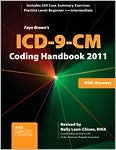Health Care Information Systems: A Practical Approach for Health Care Management
The revised third edition of Health Care Information Systems is a comprehensive text that offers an understanding of health care information systems that helps readers work effectively with and support information systems design, as well as the development and implementation. It covers current and developing information systems of interest to managers in health services organizations; health care information systems architecture; security and privacy issues; uses of health care information...
Search in google:
The Best Selling Text in the Field Updated for the New Era of Health Care IT "This is the most comprehensive and authoritative book available for the field today."—Mark L. Diana, PhD, assistant professor and MHA program director, School of Public Health and Tropical Medicine, Tulane University "With health care information technology now in the national policy spotlight, this book should be required reading for every health care administrator and student." —Mark Leavitt, MD, PhD, chairman, Certification Commission for Healthcare Information Technology "The book provides an excellent overview of foundational principles and practical strategies—a valuable reference for health administration and health informatics students and professionals." —Eta S. Berner, EdD, professor, Department of Health Services Administration, University of Alabama, Birmingham "The authors skillfully provide the tools necessary to facilitate movement from a paper-based to an electronic health record environment while championing the importance of managing in such an environment." — Melanie S. Brodnik, PhD, director and associate professor, School of Allied Medical Professions, Ohio State University "Deploying health care information technology today is like navigating whitewater in the midst of a raging storm. Leveraging investments while introducing significant change is no easy task. It requires focused attention, a spirit of collaboration, and a willingness to learn from others. This book is written for the IT leader who is willing to tackle these challenges." —Stephanie Reel, CIO and vice provost for Information Technologies, Johns Hopkins University Doody Review Services Reviewer:Katie Dejuras, RN, MSN(Northwestern Memorial Hospital)Description:This useful reference offers a thorough overview of the history and evolution of healthcare information systems and how they are managed, as well as their purpose, functions, and key attributes. It also highlights the value of information systems and barriers to adoption in healthcare. Readers will benefit from the learning activities and case studies in each chapter, where they will be able to apply the knowledge that they have gained. This is an update of a 2005 edition. Purpose:According to the authors, the purpose is to prepare future healthcare executives with the knowledge and skills they need to manage information systems technology effectively in this new environment. There is a need for a book like this as the demand for information systems in healthcare has increased, especially in light of legislation as a result of numerous studies demonstrating their value through improvement of quality, outcomes, safety, efficiency, productivity, cost reduction, services, and satisfaction.Audience:The authors wrote this book with graduate students or upper-level graduates enrolled in healthcare management programs in mind. However, it is a useful resource for anyone in healthcare management, whether an executive, manager, consultant, supplier, or student. Two of the authors are academics with impressive experience in teaching healthcare information management and the third is a chief information officer at one of the most prominent hospital systems in the U.S.Features:This book provides sound information system definitions, which are helpful as these key terms are often used in different contexts. It highlights the value of information systems, as well as the barriers to them in healthcare, explaining the lag in healthcare information technology adoption. It explains how information systems are managed, as well as their purpose, functions, and key attributes such as the electronic medical record and CPOE. References in the system implementation and support chapter, such as the Ten Commandments for effective clinical decision support as referenced by Bates, are helpful when planning to implement a system. The learning activities and case studies allow readers to apply their knowledge in a real-life setting. The index is a useful guide to topics of interest.Assessment:This is a useful resource, especially at this crucial point in time. Healthcare information system adoption is a complex topic and is not an easy one to address. Healthcare organizations are all faced with the same types of barriers (i.e. financial, organizational, behavioral, and/or technical) and this is a useful guide to the tools they need to potentially overcome these barriers. This second edition highlights the challenges of IT implementation and reminds readers to be cognizant of not only the financial costs of health information system implementation, but more importantly the process costs and the challenges they will face to adoption by end users.
Tables, Figures, and Exhibits. Foreword. Acknowledgments. The Authors. Preface. PART 1 HEALTH CARE INFORMATION. 1 INTRODUCTION TO HEALTH CARE INFORMATION. Learning Objectives. Types of Health Care Information. Internal Data and Information: Patient Specific—Clinical. Internal Data and Information: Patient Specific—Administrative. Internal Data and Information: Patient Specific—Combining Clinical and Administrative. Internal Data and Information: Aggregate—Clinical. Internal Data and Information: Aggregate—Administrative. Internal Data and Information: Aggregate—Combining Clinical and Administrative. External Data and Information: Comparative. External Data and Information: Expert or Knowledge Based. Summary. Key Terms. Learning Activities. 2 HEALTH CARE DATA QUALITY. Learning Objectives. Data Versus Information. Problems with Poor-Quality Data. Documentation. Ensuring Data and Information Quality. Data Definitions. Testing the Use of IT. Summary. Key Terms. Learning Activities. 3 HEALTH CARE INFORMATION REGULATIONS, LAWS, AND STANDARDS. Learning Objectives. Licensure, Certification, and Accreditation. Legal Aspects of Managing Health Information. Recent Health Care Privacy Violations. Summary. Key Terms. Learning Activities. PART 2 HEALTH CARE INFORMATION SYSTEMS. 4 HISTORY AND EVOLUTION OF HEALTH CARE INFORMATION SYSTEMS. Learning Objectives. Definition of Terms. History and Evolution. Why Health Care Lags in IT. Summary. Key Terms. Learning Activities. 5 CURRENT AND EMERGING USE OF CLINICAL INFORMATION SYSTEMS. Learning Objectives. The Electronic Medical Record. 2007 Davies Award Recipients: Ambulatory Care Category. 2007 Davies Award Recipient: Organizational Category. Other Major HCIS Types. CPOE Implementation. Guidelines for Clinical Electronic Mail Communication. Fitting Applications Together. Information Exchange Across Boundaries. Overcoming Barriers to Adoption. Summary. Key Terms. Learning Activities. 6 SYSTEM ACQUISITION. Learning Objectives. System Acquisition: A Definition. Systems Development Life Cycle. System Acquisition Process. Project Management Tools. Sample Contents of a Project Repository. Things That Can Go Wrong. Summary. Key Terms. Learning Activities. 7 SYSTEM IMPLEMENTATION AND SUPPORT. Learning Objectives. System Implementation Process. Managing the Organizational Aspects. System Support and Evaluation. Summary. Key Terms. Learning Activities. PART 3 INFORMATION TECHNOLOGY. 8 TECHNOLOGIES THAT SUPPORT HEALTH CARE INFORMATION SYSTEMS. Learning Objectives. System Software. Data Management and Access. Relational Data Modeling. Networks and Data Communications. Information Processing Distribution Schemes. The Internet, Intranet, and Extranets. Clinical and Managerial Decision Support. Trends in User Interactions with Systems. Information Systems Architecture. Choosing the System Architecture. Summary. Key Terms. Learning Activities. 9 HEALTH CARE INFORMATION SYSTEM STANDARDS. Learning Objectives. Standards Development Process. Classification, Vocabulary, and Terminology Standards. Health Record Content Standards. Summary. Key Terms. Learning Activities. 10 SECURITY OF HEALTH CARE INFORMATION SYSTEMS. Learning Objectives. The Health Care Organization’s Security Program. Threats to Health Care Information. Overview of HIPAA Security Rule. Outline of HIPAA Security Rule. Administrative Safeguards. Physical Safeguards. Technical Safeguards. Password Do's and Don'ts. Security in a Wireless Environment. Remote Access Security. Summary. Key Terms. Learning Activities. PART 4 SENIOR MANAGEMENT IT CHALLENGES. 11 ORGANIZING INFORMATION TECHNOLOGY SERVICES. Learning Objectives. Information Technology Functions. Organizing IT Staff and Services. In-House Versus Outsourced IT. Evaluating IT Effectiveness. Assessing the IT Function. Managing Core IT Processes. Summary. Key Terms. Learning Activities. 12 IT ALIGNMENT AND STRATEGIC PLANNING. Learning Objectives. Overview of Strategy. Areas Requiring IT Strategy. IT Strategy Vectors. The IT Asset and Governing Concepts. A Normative Approach to IT Strategy. Sample IT Agenda for a Strategy to Improve Patient Scheduling Service. Sample IT Agenda for a Strategy to Improve Health Information Access and Self-Service for Patients. Sample of Recommendations for IT Nursing Documentation Support to Improve Patient Safety. IT Strategy and Alignment Challenges. IT as a Competitive Advantage. How Great Companies Use IT. Summary. Key Terms. Learning Activities. 13 IT GOVERNANCE AND MANAGEMENT. Learning Objectives. IT Governance. The Foundation of IT Governance. Principles for IT Investments and Management. Improving Coordination and Working Relationships. Archetypes of IT Governance Decision Making. IT Effectiveness. Principles for High Performance. IT Budget. Summary. Key Terms. Learning Activities. 14 MANAGEMENT'S ROLE IN MAJOR IT INITIATIVES. Learning Objectives. Managing Change Due to IT. Managing IT Projects. Understanding IT Initiative Failures. Critical Success Factors. IT Project Implementation Checklist. Summary. Key Terms. Learning Activities. 15 ASSESSING AND ACHIEVING VALUE IN HEALTH CARE INFORMATION SYSTEMS. Learning Objectives. Definition of IT-Enabled Value. Four Types of IT Investment. The IT Project Proposal. Steps to Improve Value Realization. Why IT Fails to Deliver Returns. Analyses of the IT Value Challenge. Summary. Key Terms. Learning Activities. 16 HEALTH IT LEADERSHIP. Case 1: Board Support for a Capital Project. Case 2: The Decision to Develop an IT Strategic Plan. Case 3: Selection of a Patient Safety Strategy. Case 4: Strategic IS Planning for the Hospital ED. Case 5: Planning an EMR Implementation. Case 6: Considerations for Voice over IP Telephony. Case 7: Implementing a Capacity Management Information System. Case 8: Implementing a Telemedicine Solution. Case 9: Replacing a Practice Management System. Case 10: Conversion to an EMR Messaging System. Case 11: Concerns and Workarounds with a Clinical Documentation System. Case 12: Strategies for Implementing CPOE. Case Study 13: Implementing a Syndromic Surveillance System. Case Study 14: The Admitting System Crashes. Case Study 15: Breaching the Security of an Internet Patient Portal. Case Study 16: Assessing the Value and Impact of CPOE. Appendixes. A Overview of the Health Care IT Industry. B Sample Project Charter. References. Index.
\ Reviewer: Katie Dejuras, RN, MSN(Northwestern Memorial Hospital)\ Description: This useful reference offers a thorough overview of the history and evolution of healthcare information systems and how they are managed, as well as their purpose, functions, and key attributes. It also highlights the value of information systems and barriers to adoption in healthcare. Readers will benefit from the learning activities and case studies in each chapter, where they will be able to apply the knowledge that they have gained. This is an update of a 2005 edition. \ Purpose: According to the authors, the purpose is to prepare future healthcare executives with the knowledge and skills they need to manage information systems technology effectively in this new environment. There is a need for a book like this as the demand for information systems in healthcare has increased, especially in light of legislation as a result of numerous studies demonstrating their value through improvement of quality, outcomes, safety, efficiency, productivity, cost reduction, services, and satisfaction.\ Audience: The authors wrote this book with graduate students or upper-level graduates enrolled in healthcare management programs in mind. However, it is a useful resource for anyone in healthcare management, whether an executive, manager, consultant, supplier, or student. Two of the authors are academics with impressive experience in teaching healthcare information management and the third is a chief information officer at one of the most prominent hospital systems in the U.S.\ Features: This book provides sound information system definitions, which are helpful as these key terms are often used in different contexts. It highlights the value of information systems, as well as the barriers to them in healthcare, explaining the lag in healthcare information technology adoption. It explains how information systems are managed, as well as their purpose, functions, and key attributes such as the electronic medical record and CPOE. References in the system implementation and support chapter, such as the Ten Commandments for effective clinical decision support as referenced by Bates, are helpful when planning to implement a system. The learning activities and case studies allow readers to apply their knowledge in a real-life setting. The index is a useful guide to topics of interest.\ Assessment: This is a useful resource, especially at this crucial point in time. Healthcare information system adoption is a complex topic and is not an easy one to address. Healthcare organizations are all faced with the same types of barriers (i.e. financial, organizational, behavioral, and/or technical) and this is a useful guide to the tools they need to potentially overcome these barriers. This second edition highlights the challenges of IT implementation and reminds readers to be cognizant of not only the financial costs of health information system implementation, but more importantly the process costs and the challenges they will face to adoption by end users.\ \








